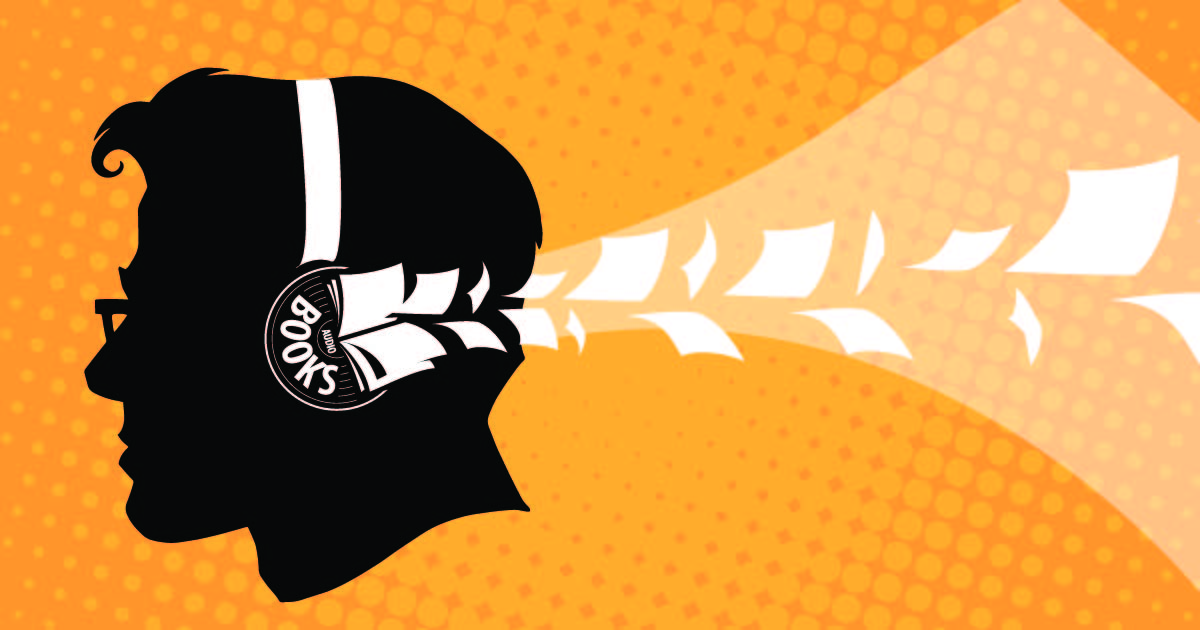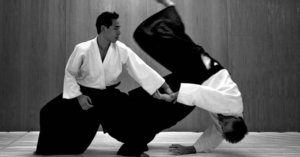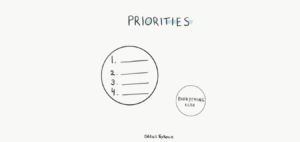When Bill Gates was asked what would happen if he could have a superpower, he replied, “Much faster reading power.”
By solving the basic principle and process of reading, science has shown us how we can read faster.
Undergraduate students at Princeton University are taught how to read faster in a seminar called “The PX Project”.
PX Project

Project PX, a 3-hour cognitive experiment, produces an average 386% increase in reading speed.
The project was tested in 5 languages and even dyslexic patients were able to read up to 3,000 words per minute (wpm) and 10 pages per minute. So 1 page every 6 seconds.
By comparison, the overall average read speed is 200-300wpm (half a page per minute or one page), with the top 1% of the population reading more than 400wpm in the US.
The project says that if you understand the basic human visual system, you can eliminate inefficiency and increase your reading speed.
The materials you will need to do the exercises in this article: a not very long book with an average of 200 pages, a pen, a stopwatch and a notepad.
First, let’s look at the various definitions and distinctions specific to the reading process:
A) To increase speed, you should minimize the number and time of fixation (stopping fluency and word fixation) per line:
You don’t read across the line in a straight line, although it may feel like it, but rather your eyes ricochet through a series of movements called saccadic. Each of these gestures ends with a pin or a temporary snapshot of the text in your focus area.
Fixation for an untrained person takes a quarter or half a second. To understand this, close one eye, place your fingertip on the closed eyelid, and then slowly move forward with your other eye in a straight horizontal line. You will feel different fixation periods in different movements.
B) To increase speed, you must eliminate regression and jump back:
30% of your reading speed is wasted due to a condition called visual regression. It is necessary to prevent turning to the beginning and jumping backwards while advancing in the line.
C) You should try to increase the peripheral vision range and the number of registered words per fixation:
Most normal readers use the central focus, not the peripheral visual range, when reading. If you use the peripheral vision range, the detected words will become readable and your reading speed will increase by at least 50%.
Period

Respectively: 1) Learn the technique, 2) Practice the technique until it is involuntary, 3) Accelerate your reading without loss of meaning.
Keep in mind that these processes are all separate and you can sacrifice one while working out the two techniques. For example, don’t worry about reading comprehension if you’re learning to practice a motor skill with speed.
As a general rule, you will need to practice your target reading speed at 3 times your current reading speed.
So, if you are currently reading at 300 wpm and your target reading speed is 900 wpm, you will need to practice techniques with a target of 2,700 words per minute or 6 pages per minute (10 seconds per page).
First Step: Determine Your Current Status

To determine your current reading speed, take your practice book (opened completely on a table) and count the number of words in 5 lines. Divide this word count by 5 and determine your average number of words per line.
Example: 62 words / 5 lines = 12.4, you would round to 12 words per line.
Then count the number of lines on 5 pages and divide by 5 to get the average number of lines per page. Multiply that by the average number of words per line and you get your average number of words per page.
Example: 154 lines/5 pages = 30.8, rounded up to 31 lines per page x 12 words per line = 372 words per page
Mark your first line and read with a timer for 1 minute (do not read faster than usual and be careful with your reading comprehension). After a full minute, multiply the average number of lines per word to determine the current word-per-minute (wpm) rate.
 NOTE: Of course, you can also do this from the sites that measure reading speed on the internet, but it is much more useful to count through the book you have chosen to stay true to the context.
NOTE: Of course, you can also do this from the sites that measure reading speed on the internet, but it is much more useful to count through the book you have chosen to stay true to the context.Step Two: Minimize Jumpback

Regression, jump back and fixation time can be minimized with a pen or finger. I can show the importance of this as follows: Did you use a pen or your finger to count the number of words or lines while performing the basic calculations above? If you have, you have used a visual aid to guide detection efficiency and accuracy.
We will not use the pen just to prevent your eye from deviating. The pen will also help us to maintain consistent speed and reduce fixation time. You can hold it as you would while typing, but it is recommended to keep it close at hand, flat against the page.
1) Technique (2 minutes):
We will settle the technique using a pencil. Trace each line as if underlining and focus on the tip of the pen. Don’t worry about meaning.
Pause for no more than 1.5 seconds per line and increase speed with each subsequent page. Read, but under no circumstances look more than 1.5 seconds per line.
2) Speed (3 minutes):
Repeat the technique, do not hold each row for more than half a second. It’s only natural that you don’t understand anything in this part. Maintain speed and technique as the main goal (you are conditioning your perceptual reflexes in the process and remember that this is a speed exercise designed to facilitate adaptations in your system). Do not slow down. Try to allocate half a second per line for 3 minutes as much as possible; Focus on the pen and concentrate on speed and technique. Focus on the exercise and imagine nothing else.
Step Three: Perceptual Expansion

If you focus on the center of your computer screen, you can detect and record the edges of the screen. Peripheral vision exercises can increase your reading speed by more than 300%.
Untrained readers read word for word and 1. they move from word to end, halfway through their margins and peripheral areas, and spend 25-50% of their time without content.
To illustrate, let’s look at an example sentence:
“In the past, students enjoyed reading for four hours a day.”
Did you notice that when you look at the word “students” you also read the word “Formerly”? Or when you looked at the word “enjoyed”, could you see the part of “he used to read a book”?
Here, our main goal is not to read from the beginning to the end, but to try to read as environmentally as possible. The wider your field of view, the faster your reading speed will be.
1) Technique (1 minute):
Begin by continuing the principles from the previous exercise. But this time, start from the second word of each line and stop reading 1 word before the last word.
 It’s worth remembering again: You need to focus on technique, not on meaning.
It’s worth remembering again: You need to focus on technique, not on meaning.2) Technique (1 minute):
While using the same technique this time, start two words later and end two words earlier.
3) Speed (3 minutes):
Start at least 3 words after the first word of each line and end 3 words before the last word. Repeat the technique, trying not to hold each row for more than half a second.
It’s only natural that you still don’t understand what you’re reading. With these exercises, you try to put the technique in your mind and get your brain used to speed. Do not slow down. half a second per line for 3 minutes; Focus on the pen and concentrate on speed and technique. Focus on the exercise and keep your concentration.
As time passes and you get used to speed, you will realize that you will not have any trouble with meaning. Many people around the world increase their reading speed by doing these exercises.
Step Four: Calculate Your New Words Per Minute (WPM)

Mark the first line and read at the fastest comprehension rate with a timer of exactly 1 minute. Multiply your predetermined average wpm by your most recent calculation to determine your new wpm rate.
 Keep in mind that unless you continue practicing, your reading speed may decline, if not return to its original state.
Keep in mind that unless you continue practicing, your reading speed may decline, if not return to its original state. Editor’s Note and Final Thoughts:
Editor’s Note and Final Thoughts:
As everything can improve with practice, your reading speed will also improve with practice. Of course, I do not recommend doing speed reading as it will greatly reduce the pleasure you will get while reading novels, stories or poems.
However, if there are articles you need to read, long texts for which you are looking for information, or if you want to understand the text with its general concept, speed reading techniques will be your savior.
Allocating a certain portion of your time (even 20 minutes) each day to speed reading techniques will make a big difference.
Our main purpose in this system is: First of all, to finish the backward jumps naturally by sitting the technique, to make the eyes practice at high speed and thus to adapt to it, and to try to develop the meaning as all this progresses.
As long as you do not despair and continue with the exercises, you will see the difference. You can share your progress with me.

 Example: 62 words / 5 lines = 12.4, you would round to 12 words per line.
Example: 62 words / 5 lines = 12.4, you would round to 12 words per line. Editor’s Note and Final Thoughts:
Editor’s Note and Final Thoughts:













